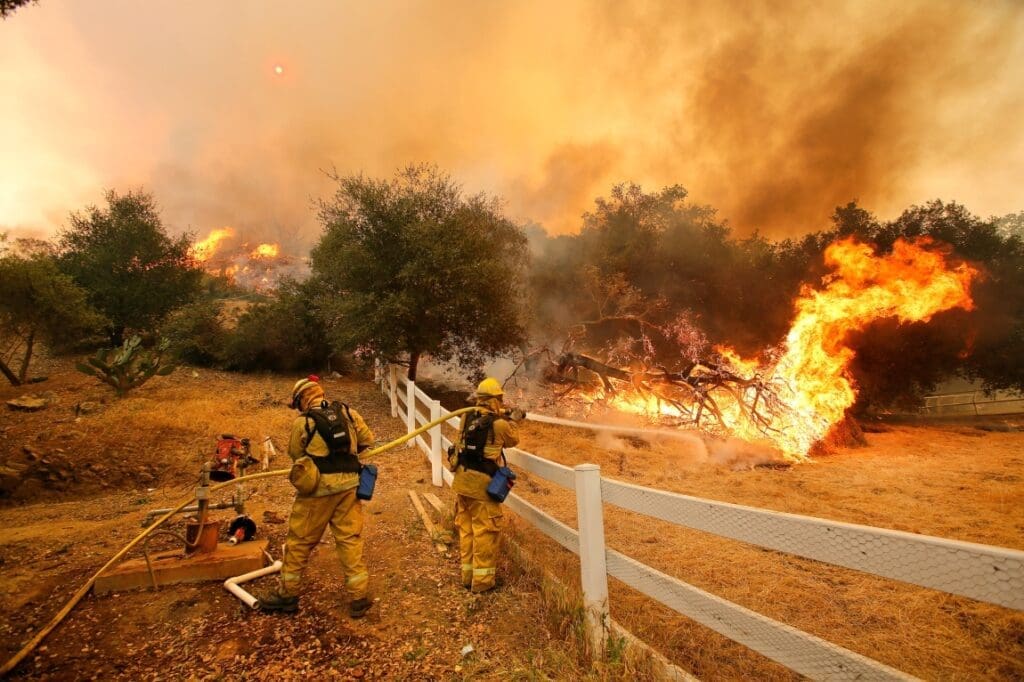Summary:
Prolonged exposure to wildfire smoke may significantly raise the risk of heart failure, particularly among older adults, women, and people living in low-income areas, according to a large national study published in JACC: Journal of the American College of Cardiology.
The research analyzed data from 22 million Medicare beneficiaries across the contiguous United States between 2007 and 2018, linking heart failure incidence with long-term exposure to fine particulate matter (PM2.5) from wildfire smoke. Compared to air pollution from nonfire sources, wildfire-related PM2.5 was associated with a substantially greater risk of heart failure: each 1 microgram per cubic meter increase in smoke PM2.5 over a two-year period was linked to a 1.4% rise in risk, versus 0.5% for other pollution sources. The study estimated over 20,000 additional cases of heart failure in older U.S. adults annually due to wildfire smoke exposure.
Researchers also found that the number of days with high PM2.5 levels from fire smoke contributed to increased risk, underscoring the impact of both intensity and frequency of smoke exposure. The findings point to growing health consequences as wildfires become more frequent and intense due to climate change, calling for urgent mitigation measures and targeted health protections for vulnerable populations.

Repeated exposure to wildfires can incrementally increase heart failure risk
In this first national, population-based study to examine how prolonged wildfire smoke exposure impacts HF risk, compared to other types of air pollution, researchers found that as the level of air pollution from wildfire smoke increased over a two-year period, the risk of developing heart failure also increased.
PM2.5 is a type of air pollution that consists of very small, inhalable particles that are 2.5 micrometers or less in diameter. It can come from different sources, including vehicle emissions, industrial activities, burning fossil fuels, construction and wildfires. Wildfire smoke pollution is an increasing global health concern as environmental changes drive more frequent and intense fires. The PM2.5 in the smoke can penetrate deep into the lungs and even enter the bloodstream, posing serious health risks.
“Over time, the average smoke pollution someone breathes in can increase very slightly — but that slight increase matters a lot for heart health, especially for vulnerable populations,” said Hua Hao, PhD, Research Scientist at the Rollins School of Public Health at Emory University and lead author of the study. “Even a small individual risk translates into a large public health impact.”
In addition to overall wildfire smoke PM2.5 levels across the United States, researchers looked at how frequently people were exposed to it. They counted how many days in a year the wildfire smoke pollution was higher than certain levels — 1 or 2.5 micrograms per cubic meter.
Among a study cohort of all Medicare beneficiaries enrolled in the Fee-For-Service program from 2007 to 2018, researchers found that each time the level of PM2.5 in wildfire smoke increased by just 1 microgram per cubic meter over a two-year period, their risk of heart failure went up by 1.4%. They estimate that this level of smoke exposure could be linked to over 20,000 additional heart failure cases each year in the U.S. among older adults.
“We also found that the association between smoke PM2.5 and HF was stronger in women, Medicaid eligible individuals and those living in lower income areas, indicating higher susceptibility,” Hao said.
Compared to the same increase in air pollution from non-smoke sources, the increase in heart failure risk rose only 0.5%. Researchers said this means there’s a potential greater relative toxicity of wildfire smoke per unit of measure compared to other types of air pollution.
“By century’s end, under a high greenhouse gas emission scenario, we expect 74% of the globe to experience substantial increases in the length of wildfire season and the frequency of wildfire events,” said Joan A. Casey, PhD, Associate Professor of epidemiology at the University of Washington’s Department of Environmental and Occupational Health Sciences and an author of the accompanying editorial comment. “This is already the case in the United States, where wildfire smoke days, once rare, now happen several times per year.”
“This study highlights a growing and underappreciated threat to heart health,” said Harlan M. Krumholz, MD, SM, Harold H. Hines Jr. Professor at Yale School of Medicine and Editor-in-Chief of JACC. “As wildfire smoke becomes more frequent and intense, we are learning that even small, long-term exposures can raise the risk of heart failure, especially among the most vulnerable. These findings elevate the urgency of protecting communities through both environmental policy and health care preparedness.”
Study limitations include potential measurement errors of predicted smoke PM2.5 concentrations, potential outcome misclassifications due to the reliance on Medicare claims data, and potential unmeasured confounding due to the inability to fully control for individual-level heart failure risk factors, such as lifestyle habits or family history. Geographical confounding may have also been a limitation.
Journal Reference:
Hao, H, Xu, K, Zhang, D. et al., ‘Long-Term Wildfire Smoke Exposure and Increased Risk of Heart Failure in Older Adults’, JACC 85 (25) 2439–2451 (2025). DOI: 10.1016/j.jacc.2025.04.058
Article Source:
Press Release/Material by American College of Cardiology (ACC)
Featured image credit: Freepik




